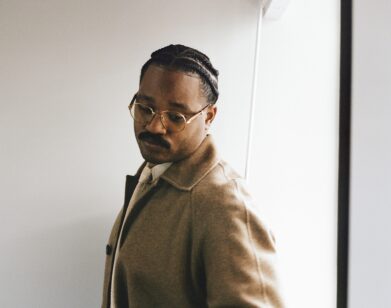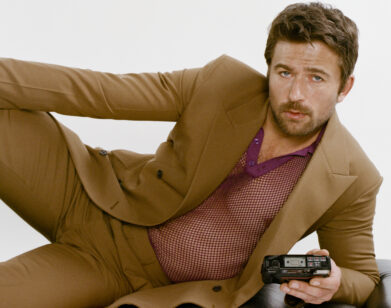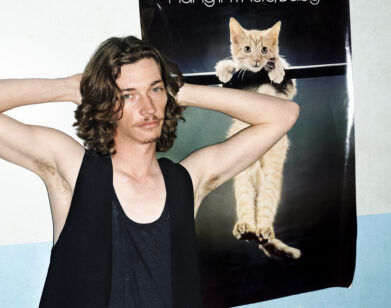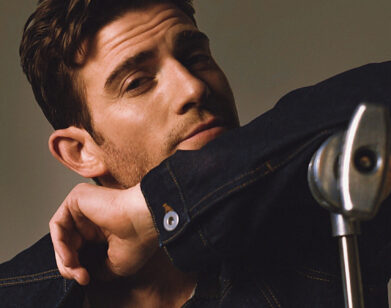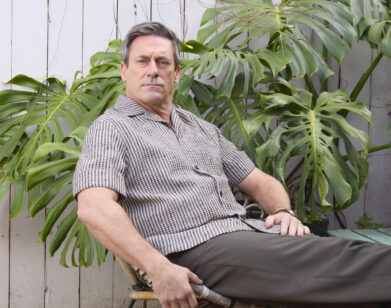Alfonso Gomez–Rejon’s Movie Masterclass
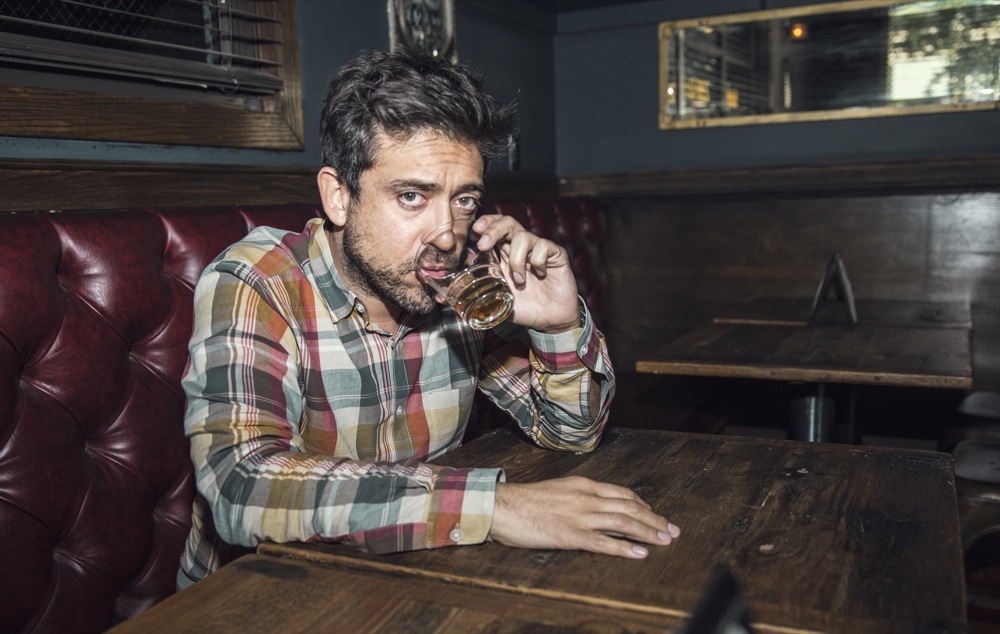
ABOVE: ALFONSO GOMEZ-REJON IN BROOKLYN, JUNE 2015. PORTRAIT BY FRANK SUN.
Alfonso Gomez-Rejon had a good reason for deferring his place at AFI: he had been working for Martin Scorsese, and Scorsese wanted him to “stick around for another year” and go to Las Vegas for Casino. “He wrote a letter encouraging them to defer my admittance,” explains Gomez-Rejon. “I talked to this guy on the phone and he said, ‘Yeah, man. Amazing. You should definitely do it! See you next year.’ I call next year and say I’m ready to come and they’re like, ‘Who did you talk to…we don’t defer admission here.'”
Gomez-Rejon reapplied, this time as a writer, and was accepted. After graduating in 1997, he assisted modern cinema greats like Nora Ephron and Alejandro González Iñárritu. He moved up to Second Unit Director (Julie & Julia with Ephron, Babel with Iñárritu, Eat Pray Love with Ryan Murphy, Argo with Ben Affleck) and then began directing episodes of Glee and American Horror Story for Ryan Murphy. “Ryan Murphy gave me a lot of freedom,” he says. “The first day he said, ‘Shake up the style. Do whatever you want to do, and if someone says you can’t do anything, tell them I said I wanted it.'”
Tomorrow, he will release Me and Earl and the Dying Girl, which Fox Searchlight bought at Sundance for a hefty $12 million. Adapted by Jesse Andrews from his book of the same name, Me and Earl follows an introverted high school cinephile named Greg Gaines (Thomas Mann); Earl (R.J. Cyler), the friend Greg refuses to call his friend; and Rachel (Olivia Cooke), the girl with cancer from the local high school’s clique of “boring senior Jewish girls, subgroup 2A,” whom Greg is forced to befriend by his mother (Connie Britton). Nick Offerman and Molly Shannon round out the cast as Greg’s weirdo (in a lovable way) professor dad and Rachel’s mother.
Raised in Laredo on the border of Texas and Mexico, Gomez-Rejon grew up in a creative family; his older brother is a musician and his older sister is a chef. “My father was on his way to sing at a radio station with his sister playing the piano—his brother was a very well known composer—when he was hit by a trolley in Mexico City,” he says. “That led to him being in the hospital for a year and a half,” he continues. “It changed his life and he became a doctor.”
The 42-year-old is serious about his cinema and generous with his knowledge. Talk to him and you will come away with a personalized list of movies to work on. His love of cinema permeates Me and Earl and The Dying Girl—not just in the short parody movies made by Greg and Earl and the paraphernalia around Greg’s room—but in the soundtrack, shot set-ups, and characterization (“Earl has very specific tastes,” the director notes. “He’s alone watching Tales of Hoffman.“).
EMMA BROWN: How did you come across this script? I know it was on the Blacklist in 2012, is that how you found out about it?
GOMEZ-REJON: It was submitted to me, I think right before it made the Blacklist. My agent had just said it might be something —a writer—that I would like. It is not like I was looking to make a high school movie, but I was very moved by it. I really identify with Greg at the beginning—in my high school experience and the fact that he’s a young filmmaker—and it was a way to celebrate movies and I could put my own ideas in there. Then I started really visualizing it: making little notes and drawing. It was exciting. I had lost my dad, so I was shooting a lot of television and I was getting recognized for my work, but I was getting further away from the film side. I really wanted to make a personal story. In the second half of the film, Mr. McCarthy’s lesson, “People’s lives continue to unfold [after they die],” I find that really moving, but I didn’t believe it and I wanted to deeply believe that idea. At that point, I even felt more connected to Greg and I really wanted to take that journey with him. I found it quite personal—I could make it into a movie that I could throw myself into. So I started lobbying to get the job.
BROWN: Do you believe that people’s lives continue to unfold now?
GOMEZ-REJON: I do. I believed it by the time I finished making the movie. The pain was so intense that I didn’t want to look at photographs, hear conversations. I didn’t want to go there. This film allowed me to be open to that, and by being open to that you hear the stories. Memories come back—vivid memories. All of a sudden there is some kind of beautiful continuum. You just have to pay attention.
BROWN: You started lobbying to get the job. Was that difficult?
GOMEZ-REJON: I didn’t think I was going to get it because I had been told there were a lot of other directors in the mix, much more accomplished, and at that point I had only done television. But I was encouraged by my friend [producer at Indian Paintbrush] Jeff Sommerville, who I had gone to NYU with, to make a visual presentation. He was just going to do me a favor and get me in the room. I wanted to know that I had tried. But that went well and led to another meeting and another meeting and then finally a presentation to Steven M. Rales, who was our financier.
BROWN: What was in your visual presentation?
GOMEZ-REJON: It was a montage. I usually put these books together—these really nice Taschen books—because I love photography. I collect; I certainly collect a lot of books. Usually I put these books together as a way of conveying texture. With this film, because it’s such an homage to the moving image, I thought it should be more of a mood reel. Not a fake trailer, which is often done, but something that had a more deliberate pace to it. It was a lot of Hal Ashby’s Harold and Maude and Mike Nichols’ The Graduate, because I saw a lot of Greg Gaines in both Ben Braddock in The Graduate and in Harold, from Harold and Maude—these kind of outsiders. I think they capture the angst of adolescence so well and both of them find the courage to express themselves and show who they really are through very powerful women. I found some connections there, and the whole piece ended with the finale to Harold and Maude, the Cat Stevens “Trouble” sequence. We reference Harold and Maude in the film. Cat Stevens’ “Trouble” is what Molly [Shannon] is listening to when they come to the house. All the references are there, all my texts are there.
BROWN: I talked to Thomas Mann right before Sundance and he said that you gave him a huge list of movies to watch.
GOMEZ-REJON: I do that all the time. The amount of money I spend on Amazon Prime is ridiculous. But it’s important to me. I love turning people onto films. Scorsese did it to me. With this film hopefully people find a lot of films they haven’t seen before. It keeps the filmmakers alive, too. It’s an extension to the theme.
BROWN: You said you didn’t set out to make a high school movie, which is it’s own distinctive subgenre. When you read the script, did you feel like there was enough there that you didn’t have add anything to make it stand out. Or did you feel like, “I want to put in interesting shots”?
GOMEZ-REJON: You don’t set out to do interesting shots. The film speaks to you a certain way. At the beginning, he is telling you a story about how much he hates that last senior year, and what that felt like, so you shoot it the way it feels: aggressively, frighteningly, like an institution, like a prison. That becomes a character. Then there is a softness in Rachel’s world that he is introduced to. At the beginning, the movie is him relying on his words and sense of humor and the masks that he is putting on for social harmony, and then all that starts to strip away. He is wearing armor; his jacket is the same color as his room where he feels protected. Then he learns to pay attention, to be still and be quiet, and the film does the same. But if we are talking technically, one of the challenges was how to make a high school movie not look like a high school movie. There is still going to be kids in the hallway with lockers on either side. How do you get beyond that? I want to have a new experience myself. When we broke into Schenley High School, it had been closed for six years. Jesse [Andrew]’s sister was with us and her husband was giving us a tour of Pittsburg and pointed at the school. I was like, “That is interesting. It’s just like a prison. Can we get in?” They were able to get a key, we met a handyman, he let us in and it looked like Chernobyl—things everywhere and ceiling panels falling on your head. All of a sudden, you realize the scope of it. It’s a character. Then I just put my camera way up there, wide lenses, and it was easy for him to hide, which was very much what he was trying to do as opposed to the end where he is like in a black tux in a white room and there is nowhere for him to hide anymore.
BROWN: I heard that the scene at the hospital with Greg and Rachel was particularly difficult. How did you finally find the right fit?
GOMEZ-REJON: Through a lot of pain. I wanted to have time for that sequence. We had a tight schedule, and sometimes you have to rush, but this one, I didn’t want to rush. It was important to me. I designed every shot in preproduction. I was timing his exit to this particular shot. It was very detailed; all of my storyboards were up on the board and laminated. I looked so prepared. Then you get there and it doesn’t feel right. You realize what’s happening, and all these happy accidents that there was no way to plan for: the flare of the projector that becomes its own little mystery; the reflection of the color on their faces that was a whole other narrative. I realized my approach was too stylized. It belonged to the beginning of the movie but, more importantly, it was designed by who I was before I started making the movie. So it was lunch and I hadn’t shot anything because I couldn’t find the right way to capture it. Finally I realized I’m just going to document it in the most simple way with a steady cam, which even if it is trying to be still, a human is holding it, so it becomes like a memory—imperfect and floaty, almost underwater. We started to find our rhythm and we just worked our way through it.
BROWN: Thomas mentioned that when he and Olivia auditioned together, they felt very confident, but then they didn’t hear back for a while.
GOMEZ-REJON: They felt right. Thomas came back; I really tortured him. He came back with 30 pages or something. It was intense because I love these characters so much; I was really going to trust Greg with my journey. There are a lot of emotions that he has to go through and when you are starting the audition process, you have to move so quickly that you do one or two scenes, maybe three scenes if you are lucky. Once you narrow it down, you really want to do as many as possible to make sure that [the actor] is doing it in a way that feels naturalistic. That he is doing the comedy in a very real way and that it is never saccharine and that the chemistry between Greg and Rachel isn’t sexual, isn’t romantic. That was key or the whole movie would have fallen apart. Rachel was kind of the life force of the movie even though Greg is in every scene. Ultimately, you can have a boy and girl in a bedroom, and I can do certain things with the camera to keep the composition playful, but you didn’t want the audience to start expecting more.
BROWN: Did you grow up watching a lot of movies?
GOMEZ-REJON: Yeah. The VHS revolution started in the early ’80s, and that is how I discovered a lot of movies. We had one theater—a four plex—that played a lot of mainstream movies, so I discovered a lot through VHS. My friend Russell Jordan’s brother lent me Apocalypse Now, and that did something to me. Then I discovered all the Scorsese films, but Mean Streets was the one that really did it for me because that was the first time I saw the Catholic iconography that I was questioning at my Catholic school documented in a way that was contemporary. Then, of course, I saw myself in some of the characters. Even though the world so foreign to me—it was the ’70s in Little Italy—it felt very contemporary. I started to understand Scorsese and hear his voice. I started watching all his movies again, and they age with you in a really great way. Blue Velvet was the second VHS I ever bought—they were very expensive back then. That led to Eraserhead and bunch of other ones. Then I went on a Woody Allen kick. Just anything I could get a hold of.
BROWN: Which of Greg and Earl’s mini-films do you most enjoy?
GOMEZ-REJON: The one that I think is a beautiful short film that Ed Bursch and Nate Marsh did is Breathe Less. It’s a beautiful short because it starts with these black and white photographs of Paris like a collage but then the camera slides through the Arc de Triomphe or something like that. It really works as a mini movie. Some don’t. Some are just impressions. My Dinner with André the Giant, that’s it. That’s the short. There is nothing more than that. Some are little beautiful narratives. But they all feel like they are made by two kids and that is what’s important. There is one [Grumpy Cul-de-Sacs], which is the bar scene from Mean Streets—there is a very famous shot of Harvey Keitel, playing Charlie, drunk at a bar. He’s going down the bar and at some point he gets on the dolly and so when he falls, the camera falls with him, and they did that with the sock puppets and it was so good. But we already had a Mean Streets reference there with the mailbox exploding, which is De Niro’s introduction in that film in the opening credits, and the other piece didn’t work without the piece of music. It was going to be too obscure of a reference.
ME AND EARL AND THE DYING GIRL COMES OUT TOMORROW, JUNE 12.


